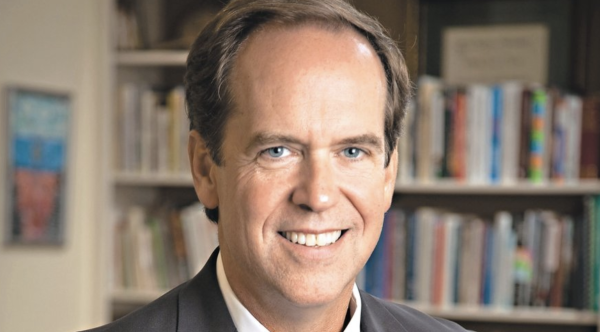Westminster to undergo major campus construction
In 15 years, iconic buildings such as Askew, Scott, Pressly, and Campbell Hall may not be the same storied edifices that have served as the foundation for Westminster’s development and continued history. As Westminster has grown over the years, the needs of the ever-changing student and faculty body have as well. Buildings designed 60 years ago were not developed with the flexible style of learning that Westminster has adopted more recently. With plans to reconfigure both the quad and the surrounding buildings of the campus, President Keith Evans hopes to seamlessly mesh Westminster’s rich history with its desire to provide cutting-edge, modern education.
“We have gone over a lot of input —including student input— to make sure that we are being good stewards of the campus and the history of the school,” said Evans. “However, we are not tied to these things, because we understand Westminster’s need to be at the forefront of education.”
Since its founding in 1951, Westminster has subsequently grown from a small group of buildings into a sprawling 180-acre campus that now encompasses eight main academic and athletic buildings. Although the project is still in the early stages of planning and design, it involves a much shorter timeline than the 66-year period that it took to develop Westminster’s campus into what it is today.
“We are not going to see major changes really soon,” said Evans. “The plans that we have in mind have probably between a decade and 15 years’ worth of work involved, but we will move as fast as we can.”
Hope remains even for those who will not be attending Westminster at the conclusion of construction. Multiple smaller projects will be worked on throughout the 15 years, ensuring that most students will have a chance to experience a part of the campus’ transformation firsthand.
“I’m just sad that I probably won’t be here to enjoy it,” said freshman Kennedy Howard. “But I do think it will be cool to see the smaller projects be completed.”
Even students graduating this year will have the opportunity to participate in the project, as architects will be visiting campus during second semester in order to receive valuable input from students and faculty. To create the optimal building designs, architects will draw inspiration from the insight given by the Westminster community and work to blend what currently exists on campus with what is to come.
“We want something that fits, but also feels new and interesting at the same time,” said Evans. “That’s why I think it’s incredibly important that students take opportunities to share their ideas and participate.”
Although student opinion will carry much influence throughout the project, the core problems that Evans hopes to address will most likely remain unchanged. The project is centered on Upper School academics, and it will alter indoor and outdoor learning and common spaces in a push to maximize the efficiency of both. Classroom reconstruction will be a high priority.
“We would like to have flexible, transparent spaces that allow us to do the kind of teaching we want to do because we are currently trying to do things, like JanTerm, in spaces that were designed for lectures,” said Evans.
The improvement of outdoor spaces is another focus of the project. By taking cues from the quads of well-respected institutions, such as the University of Virginia, Evans aims to give Westminster’s quad a new purpose.
“Another thing high on our list is creating a stronger sense of community by using the quad to create spaces that students and faculty can use more effectively,” said Evans. “At the moment, our outdoor spaces are underutilized, but we think the quad represents an area of huge potential—as a teaching space, a relaxing space, or as a studying space—but it is currently not accomplishing any of these.”
To accompany these modifications, areas that have been vastly underutilized will receive a new direction and configuration. Hallways, for example, have been used solely as areas to walk up and down, but this project aims to revise that by turning them into areas that offer opportunities to study and gather conveniently.
“I think that all of the new study and common space they are planning to add to our campus will be exciting,” said senior Jehan Ramji. “ Right now, we have the library and all of the outdoor space, but more areas to work and hang out will be a nice addition.”
The organization of the campus will also be altered, as the school intends to create a parking deck and connect different disciplines rather than separate them.
“I’m excited to see how the project will change the layout of the campus,” said freshman Jenna Brown. “It’ll be interesting to see a campus that’s been the same for over 50 years become something completely different.”
Other noteworthy features of the build include a new home for the performing arts and a “front door” for the campus, located at the top of the quad. Assemblies, chapel programs, and chorale and instrumental music will relocate to this new hall, but the theater program will remain in Kellett. Although the addition of this hall will require a big shift in the campus layout, Evans insists that the difference will be worth it.
“This new building will be a big change for us, but it will provide something that we don’t have and really need– a front door,” said Evans.
Additionally, minor tweaks to athletic facilities are a part of the project’s vision. Expect lighted athletic fields to remain as they are, but opportunities to improve current fields will be explored. This news will be welcomed by many of Westminster’s student-athletes, as many hope to see improvements in the quality of their fields.
The Lower School may also see improvements in the coming years, as its current campus poses issues similar to those of the Upper School.
“We hope to offer the Lower School some gathering space, bring afterschool care into the building, and give them a front door as well,” said Evans.
While the project as a whole has caused a buzz, there is no doubt that the student body was most captivated by the idea of a remodeled lunchroom. Though a completely new dining hall is years away, all viable short-term solutions that anticipate the long-term solution are being explored. The eagerness to move is also fueled by the prospect of a great opportunity to repurpose McCain.
“The kitchen is close by, it [McCain] is attached to the quad, and all of the necessary traffic is nearby,” said Evans. “It is the ideal location.”
After an informative assembly, the majority of Westminster students were eager to see the plans put into action. Nevertheless, a few questions remain among students, primarily about how the project will affect day-to-day activities at school.
“I know that timing is a big question for some and how classes are going to continue when construction is going on,” said Ramji.
Though these plans are undoubtedly the subject of much discussion and debate, Evans aims to alleviate any concerns by making clear the driving force behind the project.
“We are going to do some things that are very exciting and student focused,” said Evans. “The big idea behind the project was ‘How can we make the student experience here just that much better, across the board?’”




